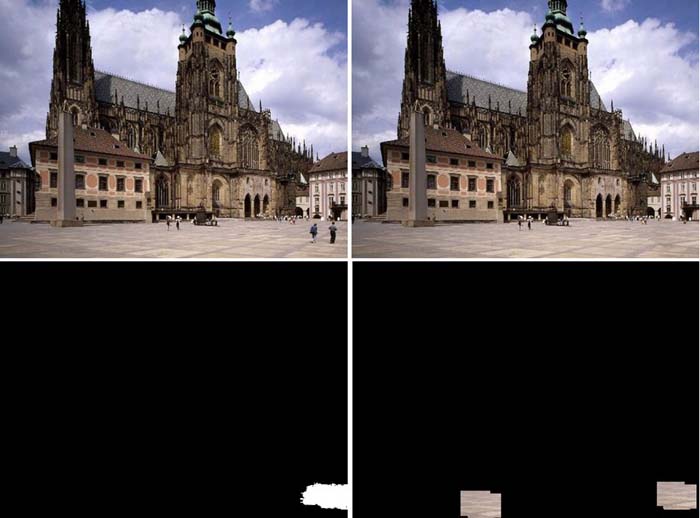Detecting near–duplicated image regions
In this work we focused on detecting a common type of digital image forgery, called copy-move forgery. In copy-move forgery, a part of the image is copied and pasted into another part of the same image, with the intention to hide an object or a region of the image. Duplicated regions may not always match exactly. This could be caused by a lossy compression algorithm, such as JPEG, or by possible use of the retouch tool. Our method is based on blur moment invariants, which allows successful detection of copy-move forgery, even when blur degradation, additional noise, or arbitrary contrast changes are present in the duplicated regions.
The main steps of the method are:
- tiling the image with overlapping blocks,
- blur moment invariants representation of the overlapping blocks,
- principal component transformation,
- k-d tree representation,
- blocks similarity analysis,
- near-duplicated regions map creation.
An example of the method's output is shown in the image below. Shown are the original version of the test image (top-left), its forged version (top-right), the modified region (bottom-left) and the constructed duplication map (bottom-right).

Results obtained show that the use of blur moment invariants can improve the detection abilities of the copy-move forgery detection methods.
| Details: | |
| Duration: | 2008 - 2010 |
| Contact person: | Babak Mahdian |
| Involved people: | Stanislav Saic |
Publications:
- B. Mahdian and S. Saic. Detection of near–duplicated image regions. In Fifth International Conference on Computer Recognition Systems, pages 187–195, Wroclaw, Poland, October 2007, Springer.
- B. Mahdian and S. Saic. Detection of copy–move forgery using a method based on blur moment invariants. Forensic Science International, vol. 171(2–3), pages 180–189, September 2007. [download pdf]
